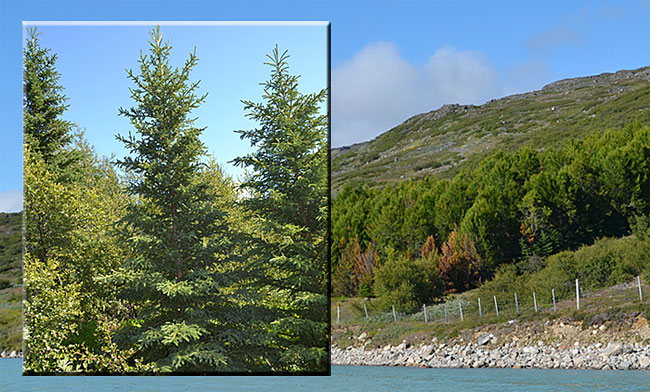Climate Change Will Green Greenland
Many species of trees and shrubs may take up residence in formerly frozen Greenland, transforming parts of the island into a lush landscape
/https://tf-cmsv2-smithsonianmag-media.s3.amazonaws.com/filer/20130830072120rsz_1rsz_greenland.jpg)
History teachers often point out the humor in Greeland’s name. That northerly land, after all, is anything but green. According to the Icelandic Sagas, Eric the Red–exiled from Iceland for the crime of murder–stumbled upon Greenland’s glacial shores in the late 10th century. Though “Coldland” or “Snowyland” would have been more apt, he dubbed the place “Grœnland” in the hopes of luring settlers to the remote outpost with the promise of bountiful forests and fields.
Eric the Red’s false advertising, however, may become more appropriate in the not-too-distant future, an international team of researchers report in the journal Philosophical Transactions of the Royal Society B. Climate change is quickly converting once-frozen tracts into potentially hospitable places for trees and shrubs. In some parts of the country, pieces of land have already opened up and only await a few chance seeds to blow in and begin the process of converting the rugged landscape into lush forest.
These findings sprouted up through a computer model the researchers built of Greenland’s predicted climate for the next 100 years. They overlaid that climate model with known data for various North American and European tree species’ ideal habitat niches. Within a century, they found, all 56 species of trees and shrubs they tested would likely be happy to take up residence or expand their reach in Greenland. Greenland, they predict, could start looking a lot more like Alaska or western Canada, though the exact composition of trees and bushes depends upon which species make it there first and take advantage of the new ecological niches.
Currently, only five species of trees or large shrubs occur naturally in Greenland–Greenland mountain ash, mountain alder, downy birch, grayleaf willow, and common juniper–and and those hardy plants grow only in scattered plots in the far south. Field experiments and ambitious gardening projects, however, have confirmed that a range of other species–including Siberian larch, white spruce, lodgepole pine and Eastern balsam poplar–can get a root-hold in Greenland if given the chance. Those species, along with the five other long-established native varieties, may begin to spread as temperatures warm. The team also predicts that invasive species–species not currently found on Greenland–will inevitably find their way to the island as well. How soon this will happen, however, remains a matter of speculation.

A forest in southern Greenland that was planted in 1953. Photo by Anders Ræbild
Without help, the researchers’ models indicate that some species of trees would take around 2,000 years to find their way to a hospitable patch of Greenland soil. In today’s age of tourism and regular flights between continents, however, the plants will most likely receive some significant, though inadvertent, colonization assistance. Researchers and tourists alike tramp around with all sorts of seeds unknowingly stuck to their shoes. A study conducted in Svalbard, an archipelago north of Norway with a similar ecosystem as Greenland, found 1,019 seeds of 53 species clinging to just 259 travelers’ shoes. Twenty-six of those species germinated in Arctic conditions when given the opportunity. Migratory birds, likewise, have been known since the time of Alfred Russell Wallace and Charles Darwin to bring along seeds stuck to their plumage and feet or passed through their bowels.
On the other hand, humans may just decide to plant the trees themselves. “People often plant utility and ornamental plants where they can grow,” Jens-Christian Svenning a biologist at Aarhus University and co-author of the paper, said in a press release. “I believe it lies in our human nature.”
However, he warns, if Greenland’s greening is left up to the locals, they should proceed with caution. “The Greenlandic countryside will be far more susceptible to introduced species in future than it is today,” he said. “So if importing and planting species takes place without any control, this could lead to nature developing in a very chaotic way.”
Whether human-mediated or not, this ecological shift, the team points out, would be no small change for Greenland. Their models predict the ice-free, tree-friendly patches to total around 400,000 square kilometers. If trees do move in, they could grow a new forest that’s nearly the size of Sweden.
While the idea of more green intuitively seems like a score for the environment, the shift from mossy tundra to towering forest will almost certainly push out some native plant and animal species. On the other hand, Greenlanders may enjoy a break from the monotony of ice, rock and lichen. Forests could bring recreational or economic possibilities, such as hunting and foraging for wood and natural edibles. Additionally, the researchers write, the trees may alleviate some of the erosion issues from quickly-trickling-away glaciers.
For better or for worse, however, just like Eric the Red we probably won’t get to see how the forests ultimately alter Greenland’s ecology. Even with human intervention, the researchers write, those forests probably won’t fully come into their own for centuries.
/https://tf-cmsv2-smithsonianmag-media.s3.amazonaws.com/accounts/headshot/Rachel-Nuwer-240.jpg)
/https://tf-cmsv2-smithsonianmag-media.s3.amazonaws.com/accounts/headshot/Rachel-Nuwer-240.jpg)